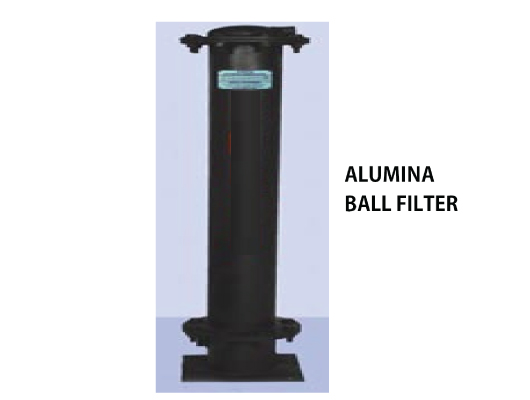-
Call
-
Whatsapp
9825014048
-
Location


Activated Carbon/Alumina Filter
Activated Carbon/Alumina Filter
The importance of proper filtration in air purification and air purification cannot be overstated. Various pollutants such as odours, volatile organic compounds (VOCs), and moisture can threaten the performance and quality of industrial processes and final products. Herein lies the dual functional potential of activated carbon/alumina filters. In this article, we explore the fascinating world of these filters, examining how they work, how they are used, and the outstanding benefits they offer.
Activated carbon, commonly called carbon, is highly porous carbon with a large surface area. This system allows it to absorb a wide range of pollutants. On the other hand, Alumina is a versatile adsorbent that excels at binding water and specific chemicals. Combining these two components in a single machine creates a powerful cleaning tool capable of addressing multiple concerns simultaneously.
How Activated Carbon/alumina Filters Work
- Adsorption: When contaminated air or gases flow through the filter, the activated carbon component absorbs organic compounds, odours, and volatile matter, while the alumina component traps water.
- Cleaning: Effectively removes trapped contaminants from air or air, leaving them clean, dry and odourless. Recycling Over time, absorbers become contaminated. Filters can be regenerated by heat or desorption to ensure continuous operation. This releases trapped material and refreshes the filter.
Applications of Activated carbon/alumina Filters
- Air Purifiers: These devices are used in air purification systems, such as HVAC units and industrial air filters, to remove odours, VOCs and pollutants from indoor air.
- Gas Purification: In the pharmaceutical industry, these filters help remove impurities, moisture, and unwanted odours from processed gas.
- Environmental Control: Environmental control systems use activated carbon/alumina filters to capture and remove exhaust pollutants before they are released into the atmosphere.
- Medical and Health Professions: They are used in medical devices to ensure the purity of gases used in patient care and anaesthesia.
- Food and Beverage Industry: These filters help improve food quality by absorbing odours and contaminants that can affect the taste and shelf life.
- Electronic Manufacturing: These filters are essential to protect manufacturing in the electronics industry, where moisture and airborne contaminants can corrode delicate components.
Benefits of Activated Carbon/alumina Filters
- Multi-Contaminant Removal: These filters effectively remove a wide range of contaminants, making them an option for various applications.
- Improved Air Quality: Eliminating odours, VOCs, and allergens in indoor spaces enhances air quality, creating a healthy and comfortable environment.
- Investment Protection: Our filters, by removing moisture and contaminants from the air, act as a shield for your machines and equipment, extending their life and ensuring your investments are secure.
- Quality: In industries such as food and electronics, these sorting machines are essential in ensuring quality and authenticity.
- Environmental Responsibility: Using these devices in emission control systems helps companies comply with environmental regulations and reduce impacts on the environment around the snow.


FAQ

Frequently Ask Questions
The frequency of replacement or reconditioning depends on factors such as the size of the filter, the amount of contaminants, and the type of application. Regular monitoring and evaluation is essential.
Yes, manufacturers often offer options to match specific application requirements, guaranteeing efficiency.
Yes, these filters are safe to use in medical and healthcare devices to ensure the cleanliness of patient care radiation.
Maintenance is usually managed for replacement or refurbishment. Although basic maintenance can be done, professional maintenance should be consulted.
These filtering devices designed to withstand environmental corrosion have specialized versions and can be used in such applications.

